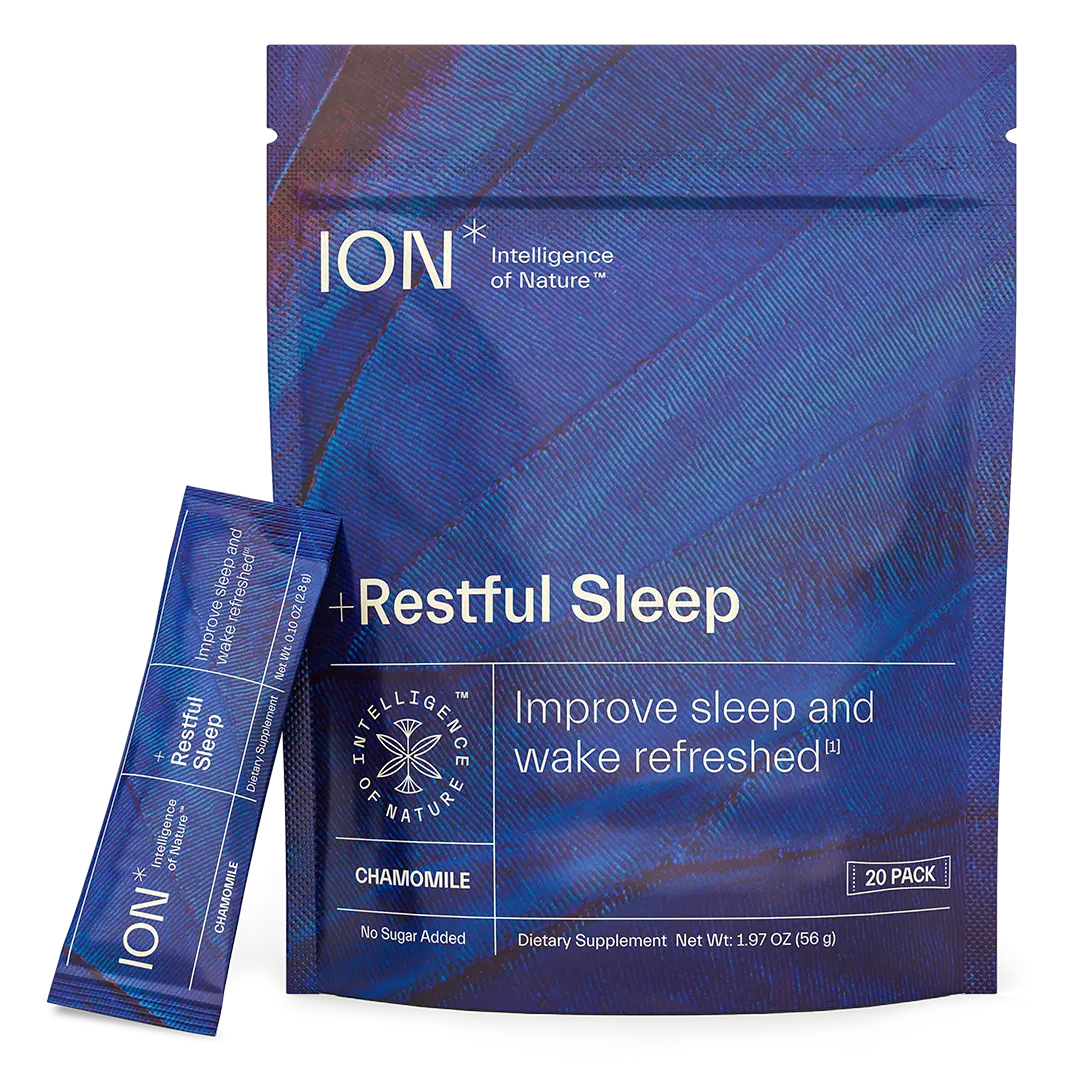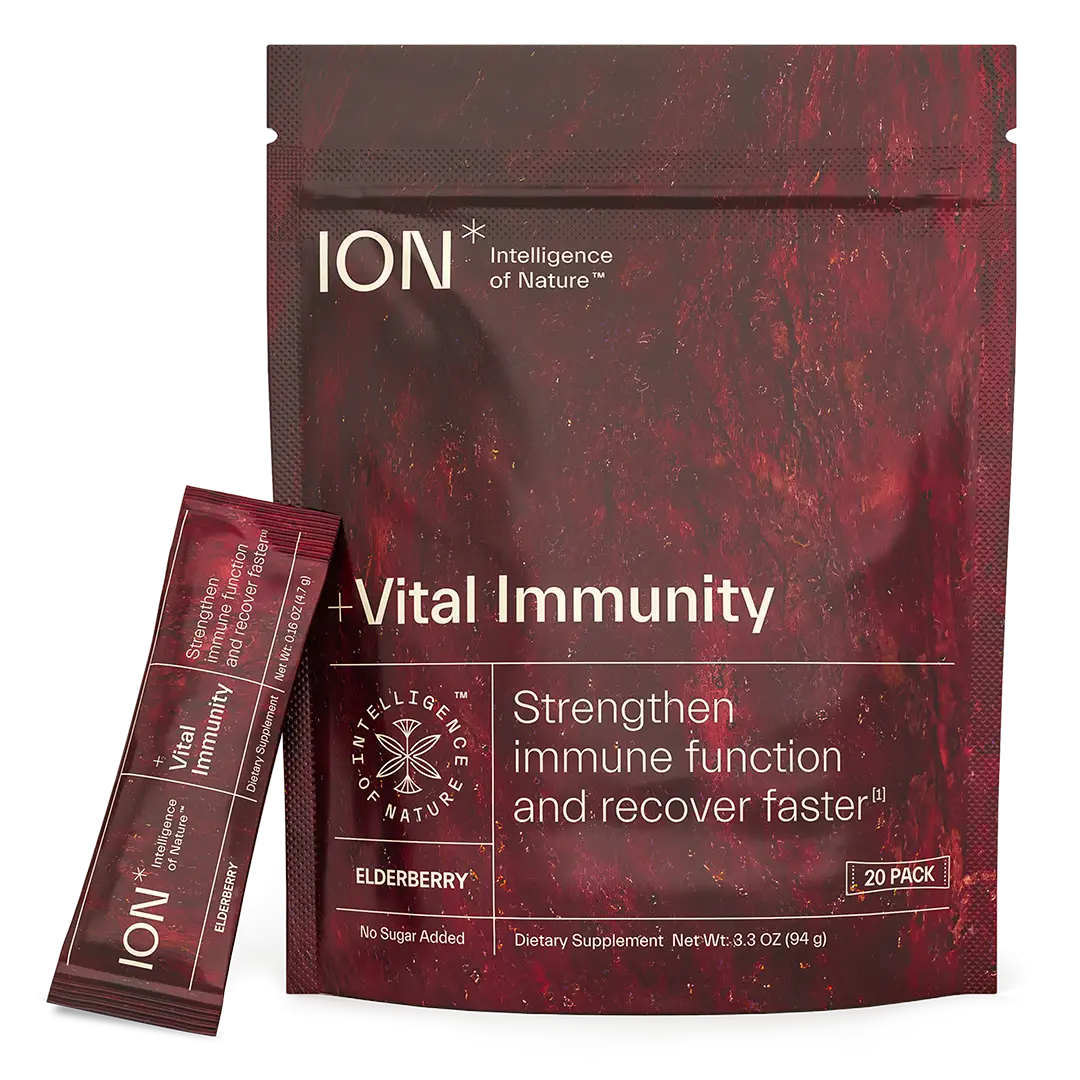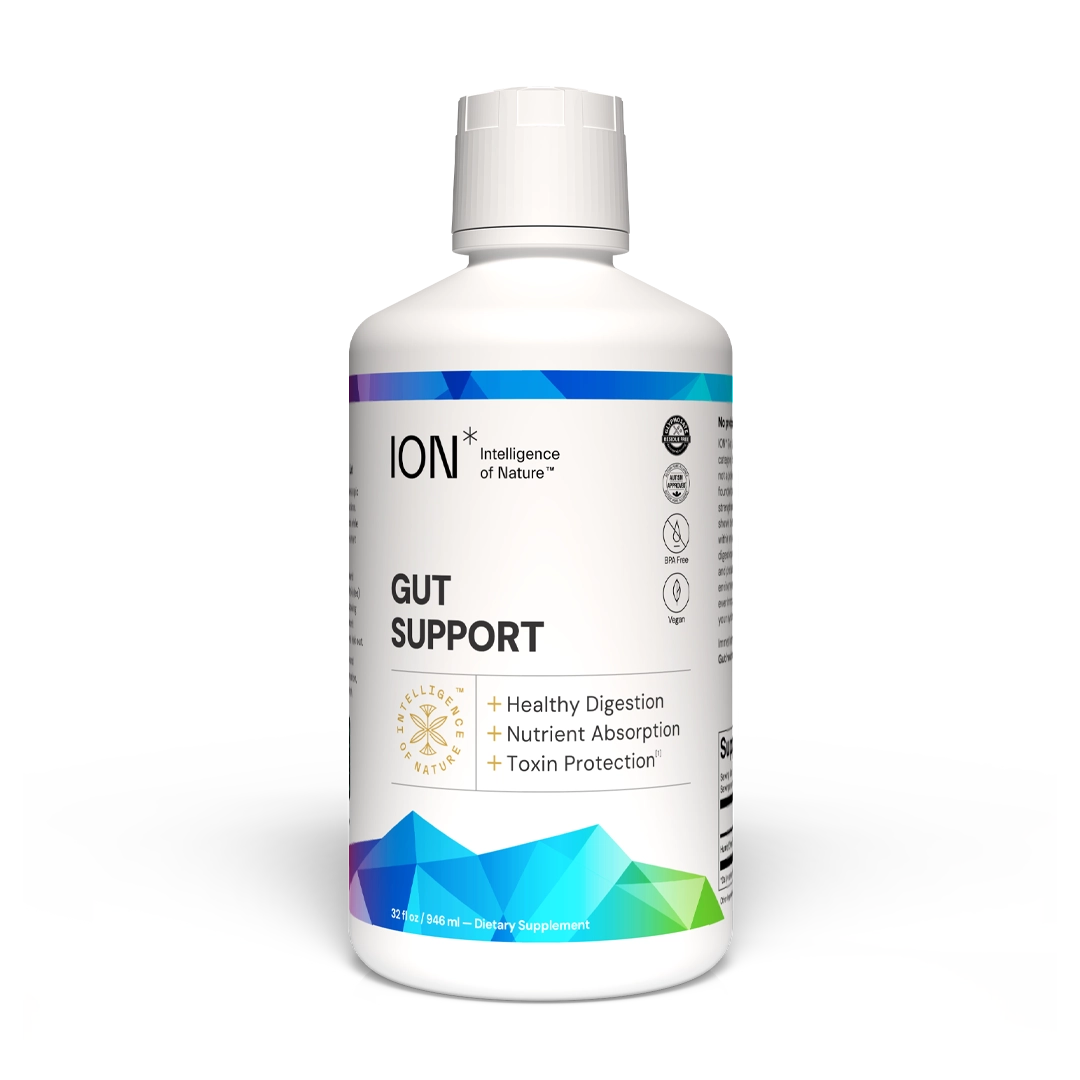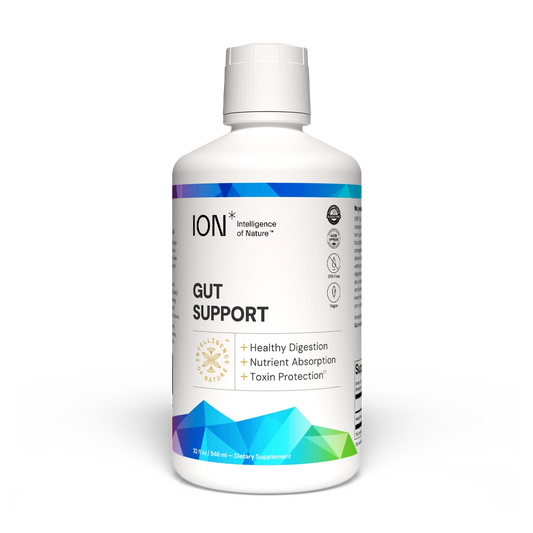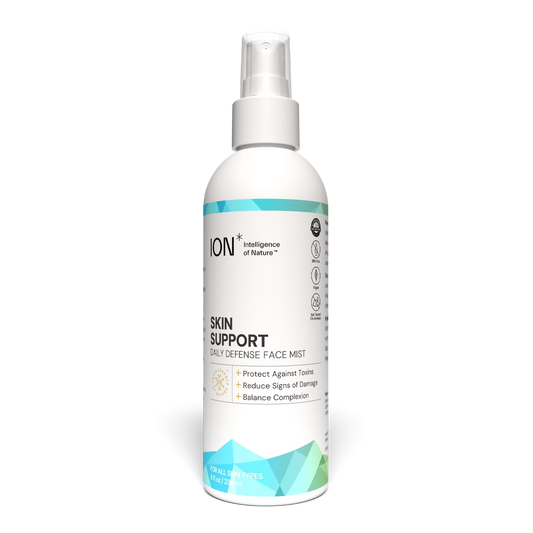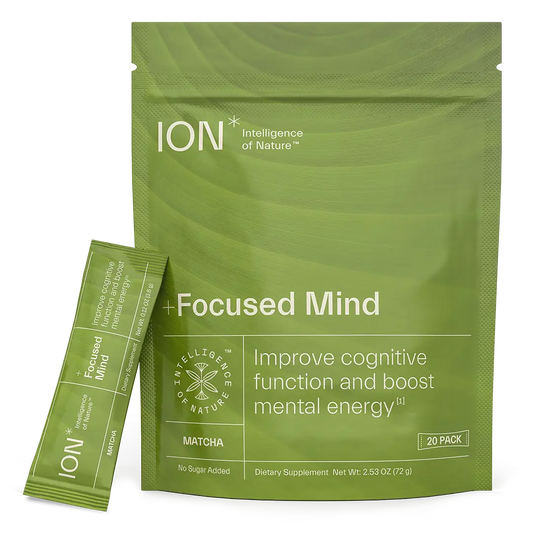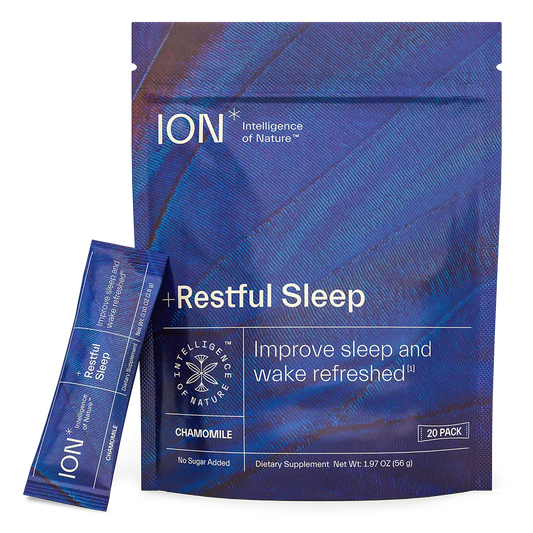
What Is Glyphosate?
There is no denying it; our modern environment is full of toxins. And this is largely due to farming practices developed over the last 50 years, specifically the use of glyphosate-based herbicides (GBHs).
Glyphosate was first discovered in 1950 and was formulated and sold as an end-use product, Roundup, in 19741,2. GBHs, including Roundup, kill plants by disrupting a crucial metabolic process called the shikimate pathway. This pathway is only present in plants, so for many years GBHs were thought to be ideal herbicides, harmless to everything but plants.
Fast-forward to 2021 and research has been finding that not only are we exposed to GBHs daily, but they are in fact harmful.
What does our glyphosate exposure level look like?
In 1996, genetically engineered herbicide-tolerant soybean, maize, and cotton seeds were approved for planting in the U.S. This significantly increased the widespread application of GBHs as it allowed farmers to apply directly onto crops. Since then, continued application has resulted in the spread of GBH-tolerant and resistant weeds, which furthers the cycle of use by requiring even more frequent applications at even higher concentrations3.
So, with more frequent applications of GBHs at higher doses, along with their use in public parks, on government properties, and in residential neighborhoods, it is not surprising that glyphosate residues are widely found not only in our food, but the air we breathe and the water we drink. Due to improper and excessive application practices, the widespread presence of glyphosate has been detected in aquatic and terrestrial environments such as bodies of freshwater and animals that feed on crop products4. Recent findings also suggest GBHs may spread by wind and water erosion5.

What is the impact of glyphosate toxicity?
The damage that glyphosate causes has been reviewed in a variety of well-researched studies, with results indicating detrimental effects in plants, animals, and humans alike.
Crops
Since animals were supposedly unaffected by GBHs, the first concern that arose from this ubiquitous herbicide was its effects on crop health, specifically its interaction with crop nutrition6. The absorption characteristics of glyphosate are different from most other herbicides. Glyphosate has been purported to reduce the uptake and translocation of nutrients in crops with recent evaluations on the chelating ability of glyphosate highlighting it as a key factor in nutrient deficiencies.
For instance, a recent crop analysis found more iron, magnesium, phosphorus, and vitamin C, and less nitrates in organic crops as compared to conventional crops. In addition, there were several trends in their data showing less protein (but of a better quality), more nutritionally significant minerals, and lower amounts of certain heavy metals in organic crops compared to conventional ones7.
Another study carried out a meta-analysis based on 343 peer-reviewed publications that indicate statistically significant and meaningful differences in composition between organic and non-organic crops/crop-based foods. Most importantly, the concentrations of antioxidants such as polyphenolics (phenolic acids, flavanones, stilbenes, flavones, flavanols and anthocyanins) were found to be substantially higher in organic crops/crop-based foods. Many of these compounds have previously been linked to a reduced risk of chronic diseases, including CVD, neurodegenerative diseases, and certain cancers, in dietary intervention and epidemiological studies8.
Animals
With strong evidence that the use of GBHs negatively impacts the nutritional quality of produce, researchers began to study their impact on animals. Reviewing the available information on toxicity of GBHs on different groups of aquatic organisms, researchers have concluded that they are hazardous to the aquatic environment (with their level of toxicity on the aquatic organisms being dependent on the organism’s life stage).
Further animal studies have shown fatty liver disease, mammary tumors, kidney damage, and reproductive issues in rats subjected to very low doses of Roundup or glyphosate9,10 with evidence also indicating glyphosate to be an endocrine disruptor, causing multiple imbalances in hormones that lead to disrupted development and disease11.
Humans
With the accumulation of evidence that GBHs are toxic to crops as well as animals, the focus on human impact has since been prioritized. Just some of the observations of glyphosate exposure in humans include liver damage12, increased risk for non-Hodgkin’s lymphoma13, and stunning correlations between usage on core crops over time and the rising prevalence of diabetes, obesity, Alzheimer’s, dementia, autism, Parkinson’s disease, pancreatic cancer, thyroid cancer, hepatitis C, liver cancer, kidney cancer, intestinal infection, and inflammatory bowel disease14.
Several recent studies, both on humans and in animal models, are showing that glyphosate exposure is also linked to infertility and health issues during pregnancy and development. A 2021 study showed that women who had high levels of AMPA (a breakdown product of glyphosate) in their urine at 26 weeks of gestation had a 4.5-fold increased risk of premature birth15.
What are some of the glyphosate dangers to humans?
How is it that GBHs are toxic to animals if they disrupt a pathway (shikimate pathway) that animals don’t use? The answer may be with our microbiome.
The microbiome, a population of bacteria, fungi, and protozoa that inhabit our various barrier systems such as the gut, nasal passages, and skin, helps protect us from toxins in the environment and relies, in part, on the shikimate pathway. So while we don’t use the shikimate pathway, fungi and bacteria indeed do. Glyphosate is causing a direct inability to synthesize amino acids and proteins, making it that much harder for the microbiome to thrive. A thriving microbiome is absolutely essential to overall health, with gut dysbiosis being linked with many diseases, including cancer, diabetes, obesity, and depression16.


Furthermore, research in our own lab has shown that glyphosate (at levels acceptable by the FDA) reduces the integrity of your gut lining through disruption of the tight junctions that bind endothelial cells together17. These results indicate that glyphosate causes a breakdown of the barrier between your gut and your bloodstream, not only altering your gut lining (the terrain upon which your microbiome lives) but opening the gates to foreign particles that directly assault your immune system, causing inflammation.
Learn more about the significance of tight junction integrity.
How to mitigate glyphosate toxicity.
With so much evidence pointing to the damaging effects of glyphosate on our produce, aquatic life, and animals and humans alike, we have some compelling reasons to reduce our exposure to GBHs. One such way, of course, is switching to organic whenever possible.
An organic certification means that foods have been produced without using most conventional pesticides, fertilizers made with synthetic ingredients or sewage sludge, bioengineering, or ionizing radiation. It also means you are likely supporting a farm that is taking active steps to remove this detrimental toxin from our soils, our food, and our bodies.
But what about the glyphosate exposure we are all getting directly from the environment? It’s true; with glyphosate exposure coming from all angles, including our water and air, complete avoidance might prove a difficult challenge. Even something as innocuous as a walk in the park is probably causing some level of exposure. Fortunately, ION* is scientifically proven to reduce the negative impact of glyphosate by strengthening tight junctions in your gut lining and supporting natural microbiome diversification. We haven’t won the war against glyphosate yet, but in the meantime, we can build up our armor.
Happy Microbiome!
Matthew Bednar, PhD
Bringing science out of the lab and into your life.
References:
- Dill GM, Sammons RD, Feng PCC, Kohn F, Kretzmer K, Mehrsheikh A, Bleeke M, Honegger JL, Farmer D, Wright D, Haupfear EA (2010) Glyphosate: discovery, development, applications, and properties. Chapter 1. In: Nandula VK (ed) Glyphosate resistance in crops and weeds: history, development, and management. Wiley, New York, pp 1–33. ISBN 978-0470410318.
- Duke SO, Powles SB (2008) Glyphosate: a once-in-a-century herbicide. Pest Manag Sci 64:319–325.
- Benbrook CM. Trends in glyphosate herbicide use in the United States and globally. Environ Sci Eur. 2016;28(1):3.
- Perez, G.L.; Vera, M.S.; Miranda, L.A. Effects of herbicide glyphosate and glyphosate-based formula-tions on aquatic ecosystems. In Herbicides and Environment; Kortekamp, A., Ed.; InTech: Rijeka, Croatia, 2011.
- Vera Silva, Luca Montanarella, Arwyn Jones, Oihane Fernández-Ugalde, Hans G.J. Mol, Coen J. Ritsema, Violette Geissen, Distribution of glyphosate and aminomethylphosphonic acid (AMPA) in agricultural topsoils of the European Union, Science of The Total Environment, Volume 621, 2018, Pages 1352-1359, ISSN 0048-9697, https://doi.org/10.1016/j.scitotenv.2017.10.093.
- Yamada, T.; Kremer, R.J.; Castro, P.R.C.; Wood, B.W. Glyphosate interactions with physiology, nutrition, and diseases of plants: Threat to agricultural sustainability? Eur. J. Agron. 2009, 31, [111–113.].
- THE JOURNAL OF ALTERNATIVE AND COMPLEMENTARY MEDICINE Volume 7, Number 2, 2001, pp. 161–173 Mary Ann Liebert, Inc.
- Barański M, Srednicka-Tober D, Volakakis N, Seal C, Sanderson R, Stewart GB, Benbrook C, Biavati B, Markellou E, Giotis C, Gromadzka-Ostrowska J, Rembiałkowska E, Skwarło-Sońta K, Tahvonen R, Janovská D, Niggli U, Nicot P, Leifert C. Higher antioxidant and lower cadmium concentrations and lower incidence of pesticide residues in organically grown crops: a systematic literature review and meta-analyses. Br J Nutr. 2014 Sep 14;112(5):794-811. doi: 10.1017/S0007114514001366. Epub 2014 Jun 26. PMID: 24968103; PMCID: PMC4141693.
- Mesnage, R., Renney, G., Séralini, GE. et al. Multiomics reveal non-alcoholic fatty liver disease in rats following chronic exposure to an ultra-low dose of Roundup herbicide. Sci Rep 7, 39328 (2017). https://doi.org/10.1038/srep39328.
- G-E Séralini, E Clair, R Mesnage, et al. Republished Study: Long-Term Toxicity of a Roundup Herbicide and a Roundup-Tolerant Genetically Modified Maize. Environ Sci Eur 2014. 11. JP Muñoz, TC. Bleak, GM. Calaf. Glyphosate and the Key Characteristics of an Endocrine Disruptor: A Review. Chemosphere 2021; 270: 128619.
- Mesnage R, Antoniou MN. Ignoring Adjuvant Toxicity Falsifies the Safety Profile of Commercial Pesticides. Front Public Health. 2018 Jan 22;5:361. doi: 10.3389/fpubh.2017.00361. PMID: 29404314; PMCID: PMC5786549.
- Zhang L, Rana I, Shaffer RM, Taioli E, Sheppard L. Exposure to glyphosate-based herbicides and risk for non-Hodgkin lymphoma: A meta-analysis and supporting evidence. Mutat Res. 2019 Jul-Sep; 781:186-206. doi: 10.1016/j.mrrev.2019.02.001. Epub 2019 Feb 10. PMID: 31342895; PMCID: PMC6706269.
- NL Swanson, A. Leu, J. Abrahamson, et al.Genetically Engineered Crops, Glyphosate and the Deterioration of Health in the United States of America. J Org Syst 2014; 9: 6-37.
- MK Silver, J Fernandez, J Tang, et al. Prenatal Exposure to Glyphosate and Its Environmental Degradate, Aminomethylphosphonic Acid (AMPA), and Preterm Birth: A Nested Case-Control Study in the PROTECT Cohort (Puerto Rico). Environmental Health Perspectives 2021; 129(5): 057011.
- Zmora, N., Suez, J. & Elinav, E. You are what you eat: diet, health and the gut microbiota. Nat Rev Gastroenterol Hepatol 16, 35–56 (2019). https://doi.org/10.1038/s41575-018-0061-2.
- The Effects of ION* Gut Support Dietary Supplement on Markers of Intestinal Permeability and Immune System Function in Healthy Subjects, https://cdn.shopify.com/s/files/1/0575/6574/1236/files/ION_White_Paper_Clinical_Trial.pdf.

